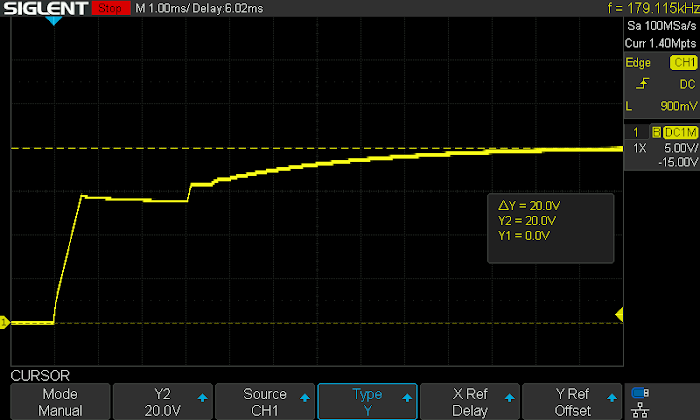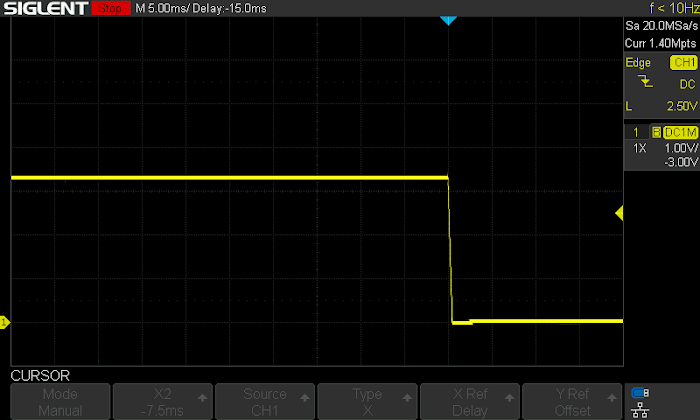I was able to get around to putting together what I felt was a proper review of this product. Note: I have never reviewed a PSU before and took hints from some of Dave's videos reviewing programmable linear supplies like the Rigol DP832 and Atten.
The Matrix MPS-3033X looks to be a clone of the BK Precision 9130B (or equivalent) and has (on paper) the same spec claims, so I used one for comparison. I also used a BK Precision 8600 programmable load and an in calibration Fluke 289 DMM.

I got this unit from
Amazon for $299 with a 25% off promotion (retails for $399).
Lets get into it.
Initial observations:
- The BK Precision is listed at a 30V@3A/30V@3A/5V@3A for CH 1/2/3 respectively. However, the unit actually lets you set 31V@3.1A/31V@3.1A/6V@3.1A.
- The Matrix is also listed as 30V@3A/30V@3A/6V@3A for CH 1/2/3 respectively. However, the unit actually lets you set 32V@3.2A/32V@3.2A/6.2V@3.2A
- The Matrix has a larger and brighter display
- The software is nearly identical (how the unit is controlled, the menu, the features). The only difference I have seed so far are subtle things like setting change confirmation messages.
- Both units have the same IO (USB, RS232, and sense for all three channels), except the BK also has a GPIB port.
- Form factor is identical and dimensionality is identical.
- The Matrix has louder relays and didn't use the standard 0.750" post separation (for BNC adapters)

- The banana cables it comes with are ok, but the alligator ends are not great.
For my comparison, I tested the following:
- Supply Power Up transients before outputs are enabled (no load) - DEPRECATED, SEE SECTION NOTE
- Supply Power Up transients before outputs are enabled (10Ω) - DEPRECATED, SEE SECTION NOTE
- Open Circuit Voltage Accuracy
- Loaded Accuracy (indicated vs measured)
100mA
1A
2A
3A - Open Circuit Power up ramp measurement
1V
5V
10V
20V
30V - 1Ω stress test and recovery (Dave's favorite)
- Pk-to-pk Open Circuit voltage noise
- CC (1.3A) for 40W transient power ramp
- Time to transition to CC mode (4A load)
- Channel Off Transients (30V, 1.3A load)
- Supply Off Transients (30V, 1.3A load)
- Supply Off Transients (5V, 1.3A load)
- Supply Off Transients (3.3V, 1.3A load)
- Supply Off Transients (3.3V, 5V-30V AC Coupled in 5V increments, 1.3A load)
1. Supply Power Up transients before outputs are enabled (no load): BK Precision on Left and Matrix on Right


There looks to be some trivial activity on the outputs of both units when they are powered up (outputs off), but the amplitude is very low and only lasts a few hundred nanoseconds.
NOTE: As another member below has pointed out, these are EMI spikes from the supply and not on the output. I will leave the content to maintain the list, but I think this can safely be dismissed.2. Supply Power Up transients before outputs are enabled (10Ω load connected): BK Precision on Left and Matrix on Right


Again, similar results with an active load connected.
NOTE: As another member below has pointed out, these are EMI spikes from the supply and not on the output. I will leave the content to maintain the list, but I think this can safely be dismissed.3. Open Circuit Voltage Accuracy: 4. Loaded Accuracy:
4. Loaded Accuracy: 5. Open Circuit Power-up Ramp:
5. Open Circuit Power-up Ramp: BK Precision on Left and Matrix on Right (
Note - BK ramps much slower so time base is 10ms vs Matrix 1ms)


Above shows the ramp for a 1V output.


Above shows the ramp for a 5V output.


Above shows the ramp for a 10V output.


Above shows the ramp for a 20V output.


Above shows the ramp for a 30V output.
6. 1Ω Stress Test and Recovery: BK Precision on Left and Matrix on Right


Both units went into constant current mode and did not oscillate between CV and CC mode. I even made sparks by shorting the channel out with banana leads over and over again. It would immediately click into CC mode and drop to ~50mV.
 7. Pk to Pk Open Circuit Noise:
7. Pk to Pk Open Circuit Noise: BK Precision on Left and Matrix on Right


Both units went into constant current mode and did not oscillate between CV and CC mode.
8. 1.3A (~40W) Constant Current Power Up Transient: BK Precision on Left and Matrix on Right


Both units went into constant current mode and held there when I used the constant wattage mode on the programmable load, so I used a CC of 1.3A. This comparison also shows the difference in ramp up rate.
9. Time Delay to Transition from CV to CC mode: BK Precision on Left and Matrix on Right


Both units went into constant current mode in 800us.


The Matrix had a slightly more aggressive drop in voltage.
10. Channel Off Transients (30V, 1.3A): BK Precision on Left and Matrix on Right


The channel output is about the same between the two units when enabling and disabling the channel with the BK being a bit more consistent as the slope doesn't change, but that doesn't matter. Both units have a safe channel power off transition with no spikes or concerning transients.
11. Supply Off Transients (30V, 1.3A): BK Precision on Left and Matrix on Right


The channel output with powering off the entire supply (while under load) is a bit different between the two units, however both have very fast and clean power drops.
12. Supply Off Transients (5V, 1.3A): BK Precision on Left and Matrix on Right


The Matrix seems to ramp up an additional 0.2V (over ~23ms) before discharging when active shutdown occurs with a 5V output which is not present in the Matrix.
13. Supply Off Transients (3.3V, 1.3A): BK Precision on Left and Matrix on Right


The BK seems to have a small transient just before discharge at 3.3V that is not present in the Matrix.
Below is a zoomed in view of the short transient present on the BK during the active 3.3V shutdown
 14. Supply Off Transients (3.3V, 5V - 30V AC Coupled in 5V increments, 1.3A):
14. Supply Off Transients (3.3V, 5V - 30V AC Coupled in 5V increments, 1.3A): Below shows the AC coupled power transients of the Matrix supply to get a better look.
- 3.3V: No transient detected.
- 5V: 26.4ms ramp up to 162mV overshoot

- 10V: 22.8ms ramp up to 152mV overshoot

- 15V: 48.2ms ramp up to 244mV overshoot

- 20V: 48.2ms ramp up to 276mV overshoot

- 25V: 49.8ms ramp up to 284mV overshoot

- 30V: 54.4ms ramp up to 288mV overshoot

The Matrix supply ramp up lasted ~26ms to ~55ms depending on the output range and ramped up to ~160mV to ~290mV depending on the output range (> 5V).
Below is a plot summary of the voltage overshoot peaks based on the output voltage to interpolate the intermediate values. (3.3V is at 0V overshoot)

This was masked in the section 11 testing due to the voltage range of the signal and DC coupling it. This characteristic is something to keep in mind, but I don't think its a concern. Also, keep in mind that I measured the overshoot peak, which is not the active level during the entire ramp up time. Please comment if you disagree!
Overall, I am pretty impressed. There are a few things that I think I could evaluate better. If anyone has any suggestions, I would be happy to experiment further!